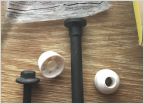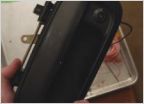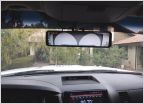-
Welcome to Tundras.com!
You are currently viewing as a guest! To get full-access, you need to register for a FREE account.
As a registered member, you’ll be able to:- Participate in all Tundra discussion topics
- Transfer over your build thread from a different forum to this one
- Communicate privately with other Tundra owners from around the world
- Post your own photos in our Members Gallery
- Access all special features of the site
Blue smoke on cold starts.
Discussion in '1st Gen Tundras (2000-2006)' started by Ksheridan, Jan 30, 2025.
Page 2 of 2
Page 2 of 2


 Sway bar links Moog K90681
Sway bar links Moog K90681 High pitch noise coming from drivers footwell
High pitch noise coming from drivers footwell Another JBL bypass question
Another JBL bypass question Has anyone installed a backup camera in a first Gen Tundra?
Has anyone installed a backup camera in a first Gen Tundra? Project Double Gnar: Adding Stereo & Camera
Project Double Gnar: Adding Stereo & Camera Backup camera system
Backup camera system














































































